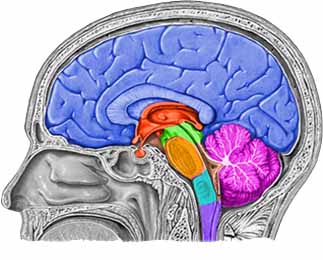A closer look at epilepsy opens a door to understand the condition
Epilepsy
Temporal lobe epilepsy; Seizure disorder
Epilepsy is a brain disorder in which a person has repeated seizures (convulsions) over time. Seizures are episodes of disturbed brain activity that cause changes in attention or behavior.
See also: Seizures
Causes, incidence, and risk factors
Epilepsy occurs when permanent changes in brain tissue cause the brain to be too excitable or jumpy. The brain sends out abnormal signals. This results in repeated, unpredictable seizures. (A single seizure that does not happen again is not epilepsy.)
Epilepsy may be due to a medical condition or injury that affects the brain, or the cause may be unknown (idiopathic).
Common causes of epilepsy include:
- Stroke or transient ischemic attack (TIA)
- Dementia, such as Alzheimer’s disease
- Traumatic brain injury
- Infections, including brain abscess, meningitis, encephalitis, and AIDS
- Brain problems that are present at birth (congenital brain defect)
- Brain injury that occurs during or near birth
- Metabolism disorders present at birth (such as phenylketonuria)
- Brain tumor
- Abnormal blood vessels in the brain
- Other illness that damage or destroy brain tissue
- Use of certain medications, including antidepressants, tramadol, cocaine, and amphetamines
Epilepsy seizures usually begin between ages 5 and 20, but they can happen at any age. There may be a family history of seizures or epilepsy.
Symptoms
Symptoms vary from person to person. Some people may have simple staring spells, while others have violent shaking and loss of alertness. The type of seizure depends on the part of the brain affected and cause of epilepsy.
Most of the time, the seizure is similar to the previous one. Some people with epilepsy have a strange sensation (such as tingling, smelling an odor that isn’t actually there, or emotional changes) before each seizure. This is called an aura.
For a detailed description of the symptoms associated with a specific type of seizure, see:
Signs and tests
The doctor will perform a physical exam, which will include a detailed look at the brain and nervous system.
An EEG (electroencephalogram) will be done to check the electrical activity in the brain. People with epilepsy will often have abnormal electrical activity seen on this test. In some cases, the test may show the area in the brain where the seizures start. The brain may appear normal after a seizure or between seizures.
To diagnose epilepsy or plan for epilepsy surgery:
- You may need to wear an EEG recorder for days or weeks while you go about your everyday life.
- You may need to stay in a special hospital where brain activity can be be watched on video cameras. This is called video EEG.
Tests that may be done include:
- Blood chemistry
- Blood sugar
- CBC (complete blood count)
- Kidney function tests
- Liver function tests
- Lumbar puncture (spinal tap)
- Tests for infectious diseases
Head CT or MRI scan often done to find the cause and location of the problem in the brain.

